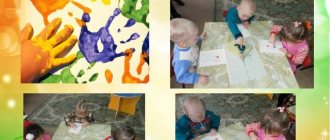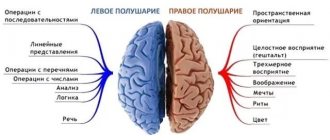In psychology, colors are given special meaning. It is believed that using different colors can influence a person’s mood and emotional state. Green is a bright and beautiful color that inevitably attracts attention. If you want to know what the meaning of the color green is in psychology, be sure to read this material.
What does it mean in psychology?
the abundance of green color in nature to chlorophyll : a special pigment found in the stems and leaves of most plants.
Thanks to it, they can independently produce nutrients for themselves: chlorophyll takes a key part in a process called photosynthesis .
Green is, along with blue, yellow and red, one of the primary colors, various combinations of which allow you to create countless additional colors.
Green has many shades, and the most famous of them are light green, turquoise, olive, chartreuse, and aquamarine.
Interesting information about the color green:
- According to a large-scale study conducted in England, the most attractive color was found to be a shade called Marrs Green. It is a neutral shade of green mixed with a little blue.
- Orthodox Christianity considers green a symbol of endless life.
- Green in Islamic beliefs is a sacred color, the embodiment of life and Paradise. It is often found on the flags of many Muslim countries, such as Saudi Arabia, Mauritania, Algeria, Pakistan.
- The color green is considered a symbol of Ireland and St. Patrick's Day. The leprechaun, a famous character in Irish folklore and one of the symbols of this country, is traditionally depicted wearing green clothes. Another symbol of Ireland is the green clover leaf.
- Various environmental movements commonly choose green as the color for their flags and logos.
What does green mean? Find out about it in the video:
Symbolism of green in clothing
The predominance of one particular shade in clothing will also tell a lot about its owner. After all, they believe that the choice of one color or another allows a person to share his mood, as well as his inner experiences, with the outside world.
- For example, if you prefer a soft green shade, then this will characterize you as an easy-going and pleasant person who likes to communicate and collaborate with other people.
- A more saturated, bright green, especially if it is complemented by yellow and orange colors, will tell about cheerfulness and physical activity. In addition, this combination of shades is designed to automatically lift your spirits and fill you with a charge of energy and vivacity. That is why clothes of this color can be used to “awaken” your inner potential.
- Dark green color, on the contrary, is designed to calm. If this is your favorite color, then it is highly likely that you are a somewhat withdrawn and distant person who likes to be alone and in solitude.
What does it symbolize?
Green color has long symbolized joy, happiness, youth and childhood, warmth, carefree, prosperity, calm, balance, wisdom, growth and development, fun and hope, spring and summer.
For people, the color green has always been inextricably linked with the harvest, agriculture, and gardening.
Nowadays, this color is rarely associated with anything negative .
However, several centuries ago, the color green in certain regions was associated with demons, sorcerers, devils and small evil spirits, such as mermen.
According to popular belief, green eyes are a sure sign of a witch.
Variations of green and their meanings
As already discussed, green has more shades than any other color. Although they are all green in appearance, these shades do not carry the same meaning and aesthetic impact. Provençal green is a traditional color that symbolizes peace (like an olive branch, even if it is not green per se), but the olive shade can also suggest deception and betrayal.
Greenish-yellow or yellow-green is historically associated with cowardice and fear; however, this color can look beautiful in room designs, especially with natural light.
Neon, or lime, is positive, playful and naive, bringing to the interior a feeling of anticipation of something new and interesting, youthful enthusiasm.
Aquamarine (green-blue or blue-green) is the color of the tropical ocean. It calms the spirit and heals the emotions.
Green is the color of grass and money. Natural, confident and healthy.
Emerald green is inspiring and is believed to be associated with well-being and wealth.
Jade green is a little bluer than emerald green, so it shifts emotions towards trust, tact and diplomacy, not to mention generosity.
Teal is a rich tone of green that combines its maturity and depth with serenity, integrity and sophistication.
Dark green is like the brooding older brother of the other greens - gloomy and dark - it exudes a bit of greed, selfishness and resentment.
What is it associated with?
The main association with the color green that any person will have are plants, leaves of trees and flowers, berries, vegetables and fruits (green grapes, limes, cucumbers, avocados, green varieties of apples).
Some reptiles and birds are also green in color. Among reptiles and amphibians, these are frogs, some lizards and snakes, toads, crocodiles, and monitor lizards.
Among the birds, green organists, parrots, green bee-eaters, and certain species of pigeons can boast green plumage.
Psychologists have different attitudes towards different shades of green.
For example, the light green color is associated not only with green, but also with yellow, and therefore partially takes on its characteristics.
If there is little green in the light green color, it looks colder and softer, so it has a calming rather than stimulating effect on people.
In psychology, green is considered a predominantly positive color , even its dark shades rarely cause pronounced negativity, since in all its manifestations it has a close associative connection with nature, which people encounter every day.
What does the color pink mean in psychology? Read about it here.
The magic of green:
A little interesting about the perception of colors
The concept of flowers was invented by the famous poet Goethe. According to her, all dark shades are designed to calm, and light shades, on the contrary, excite. The very first color that appears from darkness is blue, and from light – yellow (they are the basic colors from which other shades are formed).
Find out what awaits you today - Horoscope for today for all zodiac signs
Due to numerous requests from subscribers, we have prepared an accurate horoscope application for mobile phones. Forecasts will arrive for your zodiac sign every morning - it's impossible to miss! Download for free: Daily Horoscope 2020 (available on Android)
Color can affect a person both physically (for a short time) and mentally (if you look at specific objects for a long time).
The perception of colors occurs through associations: for example, blue is cold. First, color is perceived by the organs of vision, and then its effect reaches tactile sensations.
It has been scientifically established that colors can influence blood pressure - shades in the spectrum from blue to green increase it, and from yellow to red - have the opposite effect.
Purpose of use in advertising
The color green is actively used when advertising organics and food products in general, since buyers associate it with freshness, naturalness, and closeness to nature.
A variety of stickers and inscriptions that include the words “eco” and “bio” are also usually made using the color green.
Since packaging must reflect the contents, green color can be used when developing packaging for products containing vegetables, fruits or berries colored in it.
Green is also well suited for advertising medicines , private hospitals, including veterinary clinics, and pharmacies, as it is associated with health and youth.
Who suits green color
Green has many different shades. Some of them are warm, others are cold. This must be taken into account when choosing outfits. For representatives of the “cool” color types “summer” and “winter”, cool shades of green are best suited. If you really want to wear warm shades of color, then they should be used in the lower part of the suit - in the form of a skirt, trousers, bag, shoes. That is, it is recommended to “move it” away from the face.
For the top of the suit, it is better to choose cool mint or cabbage, as well as light shades with a dash of gray. Among the bright options, the colors of lush grass, pine needles, and bottle green are recommended. Emerald is ideal for the “winter” color type; they can make it the base color. For the “summer” color type, it is better to use an emerald shade in the form of accessories.
Olive tones and shades of moss are great for “summer” girls. But the “winter” color type is the only one who suits black-green; they can use it for evening dresses.
Girls with a “warm” type of appearance should choose similar shades of green. Representatives of the “autumn” and spring color types will look charming in the color of young grass or pistachio.
“Spring” girls can safely choose such bright shades as light green and lime color. And “autumn” fashionistas prefer darker tones - the color of dry moss, marsh, green-brown.
Impact on the psyche
Different shades of green have different effects on a person's well-being.
In general, green can be classified as a calming, relaxing color, but its bright, rich shades, such as light green, can, on the contrary, have a mild invigorating effect and give energy.
Features of the influence of green color on well-being:
- Green color has an extremely beneficial effect on the human psyche .
It helps fight a whole range of problems: phobias, depression, anxiety disorders and neuroses. It can also increase stress resistance, “cool down” aggressive and hot-tempered people, give strength to those who feel tired and overwhelmed, lift their spirits, increase concentration and performance. Falling asleep in a room whose walls are painted neutral green is pleasant and easy. - Studies have shown that people who are in a room with an abundance of green objects feel comfortable, warm and cozy. Even a small amount of green objects can refresh a room and have a beneficial effect on the well-being of the people staying in it.
- It helps to quickly get rid of negative emotions and softens the severity of mood swings in people with mental illnesses.
- This color, according to color therapists, reduces pain , speeds up the process of treating infectious diseases, normalizes blood pressure and heart rate, reduces body temperature, and improves the functioning of most organs and systems.
Its most powerful effect is on the organs of vision, skeletal and muscular systems, gastrointestinal tract, pituitary gland, and respiratory system. - It has a positive effect on the process of developing love feelings , helping lovers to be more reasonable and attentive to each other.
Who needs to paint their room green? Color in interior design:
What symbolism does the color green have?
Green symbolically corresponds to the first sprouts of wheat. As mentioned earlier, in psychology the shade symbolizes softness and calmness, and sometimes even hypochondria.
Psychologists have noticed that the green tint has a particularly positive effect on anxious individuals - it helps them calm down and feel in a harmonious and trusting state with reality.
Practical psychology actively uses the amazing properties of the color green - people suffering from nervous pathologies are advised to spend a lot of time surrounded by the color green. To do this, you can paint the walls of your room in this shade, and in the spring, when nature begins to bloom, spend as much time as possible outside the house in the fresh air.
Pulls to green: what does it mean?
living in Western countries the color green attractive
There is some connection between color preferences and people's personalities, so information about a new acquaintance's favorite colors can be useful.
But one should not take characteristics too seriously : each person is unique, and it is best to get to know others through close communication, and not through average character descriptions.
Men who find the color green attractive usually have the following personality traits:
- Equilibrium. It is difficult to piss off men who choose green. They are able to maintain composure in almost any situation. Aggression and hot temper are not their thing.
- Good nature. They can be called good-natured people, or at least friendly, bright people who try to help others as best they can. They smile often and have well-developed empathy.
- The desire to care. Men who love green make wonderful husbands and fathers. They take care of those who are dear to them and do everything possible to ensure that their loved ones are satisfied and happy.
- Diligence and perseverance. These men show good performance, they are persistent and attentive to detail, but not so much that they can be called perfectionists.
- Sociability. Of course, men who choose green are not as sociable as those who love red, yellow or orange, but they love communication and know how to evoke positive emotions in people.
- Optimism. They face life's troubles with a smile and often resort to self-irony to remain calm and confident even in the most difficult situations.
Women who find green attractive are more likely than others to prioritize family and close circles over work and career.
They are friendly, love to make new acquaintances, have good mental and physical health, and often choose sports, dancing or yoga as a hobby.
They have the following features:
- Empathy. In women, empathy and emotional intelligence are generally more developed than in men, so they often offer their emotional support to other people and are able to give good advice. They make excellent psychologists and psychotherapists.
- Patience. Like men, these women are able to control their emotions for a long time and are not prone to hysterics and sudden mood swings. Developed empathy helps them better understand the feelings and experiences of others, and when you understand why a person behaves in a certain way, it is easier to endure and find the right words.
- Politeness. They are smiling and attentive, treat the people around them with respect and do everything possible not to cause them discomfort without good reason.
Also, people who prefer green are distinguished by their prudence and know how to maintain a balance of emotions and reason.
What does the color purple symbolize? Find out about this from our article.
How does the color green affect people?
In a positive way
What does the color green mean in relation to a specific person? Speaking about the positive qualities of fans of this color, it is necessary to talk about commitment, stability, perseverance, nobility of character and truthfulness.
Those who like the green tint, according to psychologists, show objectivity, as they are able to see both the positive and negative sides in everything. And with the help of this opportunity, they very soberly assess themselves and their capabilities. Thanks to a specific successful calculation, such individuals gain authority among their close circle, and in addition, their opinion is usually always decisive.
Still green, according to psychologists, symbolizes growth. For this reason, those who like this shade are distinguished by a constant desire for something new, due to which they develop and improve as individuals. In addition, green psychology gives its fans a kind heart, compassion and stability.
In a negative way
In addition to the positive ones, the green tint also has its negative properties.
So, for example, in some cases it has such a calming effect on a person that during his stay “in the green world” he stops wanting something, since he receives a kind of energetic support from this shade.
The green tint retains its secrets, the secrets of the universe, so it can endow someone with excessive secrecy, which will only harm. Psychologists use this phenomenon for their own purposes - to cure people suffering from claustrophobia. After all, when they find themselves in a closed room decorated in green colors, they begin to calm down under the influence of the shade.
However, you should not turn to the color green for help if you are nervously exhausted, because otherwise a complete loss of strength is very likely.
Basically, the effect of a green tint depends on the balance between yellow and blue. So, with a predominance of blue, the shade will turn into a colder and more intense one. A higher percentage of yellow will help create a light and harmonious atmosphere.
Who is it suitable for?
This color can be called universal: if you choose the right color combinations, it will look appropriate both at a party and for an interview.
However, for serious events it is not recommended to wear things painted in bright green and light green shades: you can create the impression of a frivolous person.
Green color in the interior is perfect for people who value spiritual comfort and want to feel as comfortable as possible. Neutral green shades are well suited for bedroom decoration.
It can be successfully combined with different shades of brown and blue, white, black, yellow, orange.
How to combine green in clothes? Stylist tips:
The meaning of green
Green color is a combination of two shades - blue and yellow, and therefore it has a somewhat dual psychological characteristic. Color has limitless energy, on the one hand, and on the other, it is distinguished by an all-consuming tranquility.
Each person at the subconscious level will associate the green shade with growth, development and harmony. It’s not for nothing that young grass, which you are so happy about after long winter days, has a green tint.
What more detailed meaning is inherent in the green tint? And how does it psychologically affect people? You can find out more about this.
Colors in Slavic culture
When I was putting together my last Bereginya collection, I went to the shops of our craftsmen - what beauty you make! !Patterns, embroideries, colors! This collection turned out to be more “Russian-folk” and I saw so much folk beauty that I wanted to talk about it more. Everything that I write here, you have known for a long time without me and maybe even better than I do, but we remember it so rarely that it’s not a sin to repeat it. Now we wear the colors that are fashionable this season. Who came up with the idea that this is fashionable and good for us? And is it good?
The problem of the influence of color in modern science has not yet been exhausted. It is known that a person recognizes color not only with his eyes, but also with his skin. Therefore, the color of your clothes constantly influences you, even if you do not consider it on yourself.
The Slavs were very responsible when choosing one color or another in their lives. The Slavs chose certain colors for everyday life, and others for religious and ritual purposes. The costume was also made in accordance with one’s gender, social status and even mood.
In Slavic mythology, colors also have clear meanings. But all this variety of color meanings is quite simple to arrange in a logical chain, and all the ambiguity and interestingness of interpretations of this or that color immediately begins to emerge.
White color is the space that is located between heaven and earth. It is believed to symbolize freedom, chastity and purity. The entire color gamut is combined with white, which means that this innocent and pure color is able to try on and unite everything that happens on Earth. This is the sun, air, insight, purity, innocence, purity, holiness, sacredness, salvation, spiritual power. This color represents daylight hours. Time for work and good deeds. White color is absolute freedom from all obstacles, freedom for all possibilities. White is also a solution to problems, a new beginning. Belbog was present in the pantheon of gods as the personification of all light forces. The symbol of Svyatovit is white. This is due to the fact that Belbog and Svyatovit in tradition are the same force, only in different incarnations, and accordingly they have the same meaning. Also, the epithet “white” is associated with “living water.” The “white duck” is always a positive hero in a fairy tale, going back to the ancestor duck from the myth of the creation of the myth. “White birch” is a constant epithet in mythology for one of the Slavic sacred trees.
In protective culture, the color white is used as protection against evil spirits, which prevents evil from creeping in. The hostess always covered the table with a white tablecloth, so that guests who came to the house could not leave evil intent in the house; underwear worn under clothes should only be white in order to keep the body clean and healthy. Bed linen must be white so that death could not take away either the child, who was specially swaddled in white diapers, and a lace frill was hung around the perimeter of the crib, or the adult during sleep (it was sleep that was associated with death at that time). Bed linen was also additionally decorated with woven lace, which also served as a talisman.
The color black has two completely opposite meanings. In legends and fairy tales, the color black symbolizes the power of evil, deception, death, etc. In folklore speech there are such concepts as “black eye” - a person who can cast the evil eye or wishes evil, “black raven” - a symbol of death, “black thoughts” - bad thoughts.
In decorative and applied arts, in the symbolism of the pattern, the black color symbolizes the earth, which means motherhood and fertility, which signifies the feminine principle. When we see a black zigzag on the pattern, it symbolizes the masculine principle or the unfertilized feminine. And the black wave in the pattern is considered to be a symbol of a plowed field, ready for grain to sprout.
Black color is a symbol of Chernobog. He personifies the totality of all the dark forces of the Pekel kingdom. In mythology, black epithets meant: “Black Army” - the enemy army, “Black River” - the one that brings death, “Black Stone” - the entrance to the Pekel kingdom, “Black Raven” - the harbinger of death, etc.
In oberezhnaya culture, in combination with red, it enhanced the protective effect of the ornament. Black – fertile Mother Earth, this color was assigned the role of protecting women from infertility
Red color symbolizes fire, life, impeccability. The image of fire can be seen in the form of a cross. Fire symbolizes the sun and is endowed with the same properties. It symbolizes ideality and health. It is also an excellent protection against everything bad.
The red sun gives life;
Spring is red - gives new life to plants and animals;
Red Summer is a celebration of life;
The Red Maiden is a beautiful girl full of strength and health.
Most of the embroidery was red, as a symbol of life and love. This color protects living things. Red is also a sign of energy, fire, that is, the sun. It gives a healthy body, warmth, and removes any evil eye.
In amulets, color plays an important role ; it is used for vital protection. Girls wove red ribbons into their hair, wore red rowan beads, boots and sundresses - this is a life-giving color, and also to add vitality and health. With the help of such clothes, people still glorified the life of God Ra.
In fairy tales and legends, the color red is feminine, for example, the symbol of a girl is a scarlet flower, the color of a poppy is a girlish color, and the symbol of a woman is a red berry.
The color of Yarila, the sun, red is primarily associated with spring, fertility, life and, of course, the spring sun that revives nature to life.
Blue is the color of masculinity and also symbolizes the sky. It is believed that water reflects the heavenly in the earthly . The masculine principle is called upon to protect the woman and glorify life. The blue color symbolizes a boy or an unmarried youth, and blue symbolizes the power and strength of a man.
The color of a flower carries a hidden meaning: a bell symbolizes an invitation to a date and sympathy, a forget-me-not symbolizes parting with a loved one, and flax symbolizes masculinity.
The symbol of a man's protection over a woman is a scarf. Just as the sky envelops the earth, so the masculine principle (shawl) covers and protects the feminine. A girl receiving a scarf as a gift from a boy symbolizes his favor and desire to protect and protect her, and the husband confirmed his masculinity with such a gift. It was necessary for the husband to put a scarf on his wife’s head, and if the woman allowed him to do this, it symbolized that she had this particular man in her heart.
Blue color protected from bad weather and natural elements. It was used mainly on men's clothing, because it was the man who was often away from home, getting food or being at war. Blue water is the sky on earth, its reflection. A blue embroidered ornament on a person’s dress tells us that he has embarked on the spiritual path of self-improvement.
Green - Symbol of the Forest, youth and rebirth. These are spring, reproduction, joy, confidence, nature, paradise, abundance, prosperity, peace. Green denoted the Tree of the World.
Also, the symbol of a sown field and young shoots was always painted in green. Green color corresponds to evergreen nature.
“Green garden” - in mythology it is usually used in the metaphorical meaning of “blooming life”.










